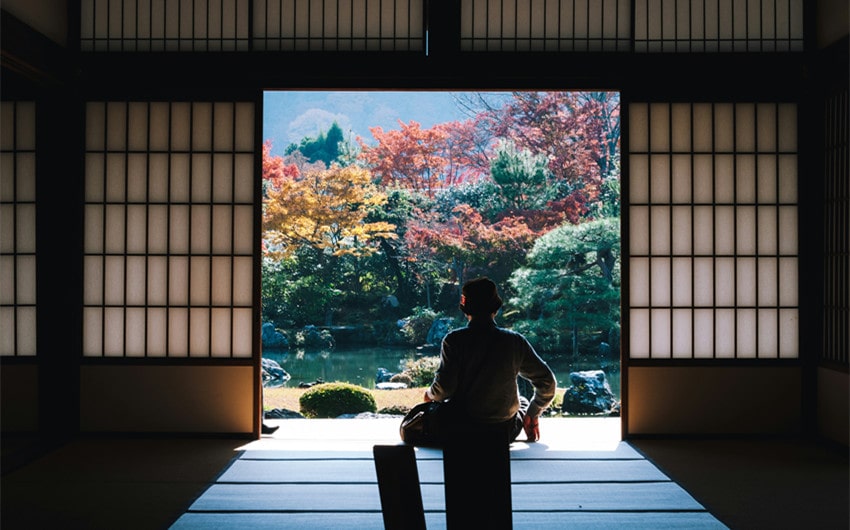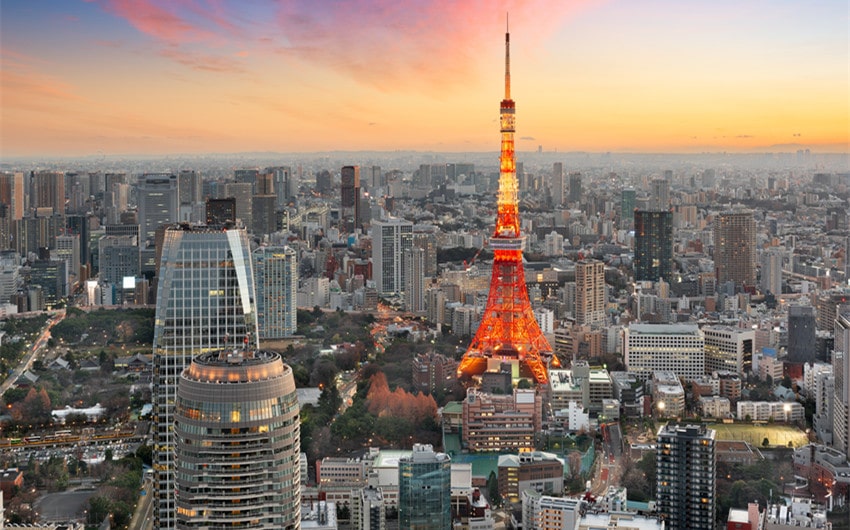Explore 165 Popular Japanese Last Names and Their Origins
Japanese last names carry deep cultural significance, often reflecting the geography, history, and family heritage of the individuals who bear them. Whether rooted in ancient samurai traditions or influenced by nature, these surnames offer a fascinating glimpse into Japan’s rich cultural tapestry.
Understanding the meanings and origins of Japanese last names can provide a deeper connection to the stories and traditions that have shaped Japanese society over centuries. In this article, we’ll explore the history and evolution of these names, along with examples of common, regional, and unique Japanese last names.
The History and Evolution of Japanese Last Names

Japanese last names, or “myōji,” have a rich history that reflects the country’s social, cultural, and political evolution. Unlike many Western cultures where surnames have been used for centuries, the widespread use of last names in Japan is relatively recent, dating back to the Heian period and significantly shaped by the events of the Meiji Restoration. Here’s a closer look at the key phases in the history and evolution of Japanese last names.
1. Early Origins
The concept of last names in Japan began during the Heian period (794-1185). Initially, last names were primarily used by the aristocracy and samurai class to signify lineage and social status. These names were often derived from geographical features, such as mountains, rivers, or villages, where the family resided or held power. For instance, the famous Fujiwara clan derived their name from Mount Fuji, symbolizing their connection to a prominent geographical landmark.
During this period, last names were not commonly used among the general populace. They were exclusive to the ruling and noble classes as a way to maintain lineage and differentiate between various branches of a family. The majority of the population, particularly farmers and commoners, did not have surnames and were often identified by their given names and roles within their communities.
2. The Influence of the Samurai Class
As the samurai class rose to prominence during the Kamakura period (1185-1333) and subsequent periods, last names became more widespread among the warrior class. These names were often associated with military achievements, land ownership, or allegiance to a particular lord. Samurai families would adopt names that reflected their values, honor, and the territories they controlled. For example, the Tokugawa family, who later established the Tokugawa shogunate, adopted a name that signified their stronghold over the Tokugawa region.
Last names during this time were often passed down through generations, establishing strong family identities and connections to specific regions. This practice further solidified the importance of surnames in maintaining the social hierarchy and ensuring the continuity of family honor and prestige.
3. The Meiji Restoration and Widespread Adoption
The Meiji Restoration in 1868 marked a significant turning point in the history of Japanese last names. As part of the government’s efforts to modernize and centralize Japan, a series of reforms were implemented that required all citizens to adopt a family name. This mandate was part of the broader Meiji reforms aimed at creating a more cohesive and organized society, modeled after Western nations.
During this period, many commoners who previously had no last names were required to choose one. Often, they adopted surnames based on the geography of their local area, occupations, or by borrowing names from more prestigious families. For example, many families chose names like “Yamada” (山田, meaning “mountain field”) or “Tanaka” (田中, meaning “middle of the rice field”), reflecting their connection to agriculture and the land.
This mass adoption of surnames led to the creation of numerous new last names and the formalization of family names across Japan. It also contributed to the standardization of surnames, making them an integral part of Japanese identity.
4. Modern Usage and Legal Significance
In contemporary Japan, last names are an essential part of one’s identity, used in all formal and legal documents. The use of last names has become deeply ingrained in Japanese society, where they are often used in social interactions, particularly in formal settings. It is customary to address someone by their last name, often with the honorific “san” added for respect.
The Japanese government maintains strict regulations regarding surnames. Upon marriage, one spouse must legally change their surname to match the other’s, with the vast majority of cases resulting in the wife adopting the husband’s surname. However, there are also legal provisions for combining surnames or retaining one’s maiden name for professional use.
In modern Japan, last names continue to carry cultural significance, connecting individuals to their ancestry, family history, and regional heritage. While some surnames remain common across the country, others are closely tied to specific regions, making them an important marker of identity and social connection.
Categories of Japanese Last Names

1. Nature-Inspired Last Names
These names are derived from natural elements such as mountains, rivers, plants, and animals, reflecting the deep connection Japanese culture has with nature.
- Yamada (山田) – Mountain field
- Tanaka (田中) – Middle of rice field
- Matsumoto (松本) – Base of the pine tree
- Kawaguchi (川口) – River mouth
- Fujimoto (藤本) – Wisteria base
- Inoue (井上) – Above the well
- Ueda (上田) – Upper rice field
- Takeuchi (竹内) – Within bamboo
- Kinoshita (木下) – Under the tree
- Nishikawa (西川) – Western river
- Moriyama (森山) – Forest mountain
- Ogawa (小川) – Small river
- Takahashi (高橋) – High bridge
- Sakuraba (桜庭) – Cherry blossom field
- Yamashita (山下) – Below the mountain
- Hoshino (星野) – Star field
- Nakamura (中村) – Middle village
- Saito (斉藤) – Purification wisteria
- Mizuno (水野) – Water field
- Noguchi (野口) – Field entrance
- Morikawa (森川) – Forest river
- Ikezawa (池沢) – Marsh stream
- Matsushita (松下) – Below the pine tree
- Arakawa (荒川) – Rough river
- Fujikawa (藤川) – Wisteria river
- Yamamoto (山本) – Mountain origin
- Kuroda (黒田) – Black rice field
- Suematsu (末松) – End of the pine tree
- Mizuki (水木) – Water tree
2. Occupational Last Names
These surnames are derived from professions or trades, similar to occupational surnames in Western cultures. They often indicate the family’s traditional occupation.
- Ishikawa (石川) – Stone river (related to stonemasonry)
- Hatakeyama (畠山) – Field mountain (related to farming)
- Sakaguchi (坂口) – Sake entrance (related to sake brewing)
- Iwata (岩田) – Stone field (related to quarrying)
- Iwase (岩瀬) – Stone stream (related to water management)
- Yagami (八神) – Eight gods (related to shrine caretaking)
- Kawamoto (川本) – River origin (related to fishing)
- Otsuka (大塚) – Large mound (related to construction)
- Kanda (神田) – Divine rice field (related to shrine lands)
- Shimizu (清水) – Clear water (related to water purification)
- Kobayashi (小林) – Small forest (related to forestry)
- Tsuchiya (土屋) – Earth house (related to pottery)
- Oishi (大石) – Large stone (related to stonemasonry)
- Harada (原田) – Field rice paddy (related to agriculture)
- Honda (本田) – Root rice field (related to farming)
- Yoshida (吉田) – Lucky rice field (related to agriculture)
- Igarashi (五十嵐) – Fifty storms (related to maritime work)
- Hayakawa (早川) – Fast river (related to transportation)
- Ogura (小倉) – Small warehouse (related to storage)
- Tanabe (田辺) – Rice field edge (related to agriculture)
- Nakata (中田) – Middle rice field (related to farming)
- Aoyama (青山) – Green mountain (related to forestry)
- Oguri (小栗) – Small chestnut (related to farming)
- Aizawa (相沢) – United marsh (related to water management)
- Fukushima (福島) – Blessed island (related to fishing)
- Shibata (柴田) – Brushwood field (related to forestry)
- Nakatani (中谷) – Middle valley (related to farming)
3. Regional Last Names
These names are specific to certain regions in Japan, reflecting local geography, history, or culture. They can often identify the area where a family originated or lived.
- Kyoto (京都) – Capital city (Kyoto region)
- Osaka (大阪) – Large slope (Osaka region)
- Hokkaido (北海道) – Northern sea road (Hokkaido region)
- Sendai (仙台) – Hermit platform (Miyagi region)
- Okinawa (沖縄) – Offshore rope (Okinawa region)
- Nara (奈良) – Historical city (Nara region)
- Nagasaki (長崎) – Long cape (Nagasaki region)
- Hiroshima (広島) – Broad island (Hiroshima region)
- Fukuoka (福岡) – Blessed hill (Fukuoka region)
- Sapporo (札幌) – Important river (Hokkaido region)
- Kanazawa (金沢) – Gold marsh (Ishikawa region)
- Kagoshima (鹿児島) – Deer island (Kagoshima region)
- Nagoya (名古屋) – Famous old house (Aichi region)
- Yokohama (横浜) – Horizontal beach (Kanagawa region)
- Chiba (千葉) – Thousand leaves (Chiba region)
- Tochigi (栃木) – Chestnut tree (Tochigi region)
- Kumamoto (熊本) – Bear origin (Kumamoto region)
- Tottori (鳥取) – Bird catcher (Tottori region)
- Shizuoka (静岡) – Quiet hill (Shizuoka region)
- Gifu (岐阜) – Forked hill (Gifu region)
- Wakayama (和歌山) – Peaceful song mountain (Wakayama region)
- Yamaguchi (山口) – Mountain mouth (Yamaguchi region)
- Ibaraki (茨城) – Thorny tree (Ibaraki region)
- Miyazaki (宮崎) – Shrine promontory (Miyazaki region)
- Shiga (滋賀) – Nutritious praise (Shiga region)
- Fukui (福井) – Blessed well (Fukui region)
- Ehime (愛媛) – Love princess (Ehime region)
- Kochi (高知) – High knowledge (Kochi region)
- Akita (秋田) – Autumn field (Akita region)
4. Historical Last Names
These surnames are tied to famous historical figures, samurai families, or clans, often associated with significant events or eras in Japanese history.
- Tokugawa (徳川) – Virtue river (Edo period shogunate)
- Fujiwara (藤原) – Wisteria plain (Heian period clan)
- Oda (織田) – Weaving field (Warlord Oda Nobunaga)
- Date (伊達) – Dandy (Samurai clan)
- Uesugi (上杉) – Upper cedar (Samurai clan)
- Takeda (武田) – Martial rice field (Samurai clan)
- Sanada (真田) – True rice field (Samurai clan)
- Toyotomi (豊臣) – Bountiful minister (Warlord Toyotomi Hideyoshi)
- Shimazu (島津) – Island harbor (Samurai clan)
- Chosokabe (長宗我部) – Long religious sect (Samurai clan)
- Hojo (北条) – Northern castle (Kamakura period clan)
- Mori (毛利) – Wealthy forest (Samurai clan)
- Imagawa (今川) – Present river (Samurai clan)
- Akechi (明智) – Bright wisdom (Samurai clan)
- Hosokawa (細川) – Narrow river (Samurai clan)
- Maeda (前田) – Front rice field (Samurai clan)
- Hattori (服部) – Clothing part (Ninja clan)
- Tsukahara (塚原) – Mound field (Martial artist clan)
- Amago (尼子) – Nun child (Samurai clan)
- Asakura (朝倉) – Morning storehouse (Samurai clan)
- Tendo (天童) – Heavenly child (Samurai clan)
- Rokkaku (六角) – Hexagon (Samurai clan)
- Yamanaka (山中) – In the mountain (Samurai clan)
- Ichijo (一条) – First avenue (Noble family)
5. Religious and Spiritual Last Names
These names are linked to religious or spiritual elements, often reflecting the family’s connection to temples, shrines, or religious practices.
- Jinguji (神宮寺) – Shrine temple
- Nishimura (西村) – Western village (often linked to temple locations)
- Kannagi (神薙) – God’s offering
- Teramoto (寺本) – Temple origin
- Zenji (善寺) – Good temple
- Myojin (明神) – Bright deity
- Kannon (観音) – Goddess of mercy
- Taisha (大社) – Great shrine
- Enomoto (榎本) – Sacred tree origin
- Tenshi (天使) – Angel
- Jinja (神社) – Shinto shrine
- Byodo (平等) – Equality (linked to temple ideals)
- Daibutsu (大仏) – Great Buddha
- Horyuji (法隆寺) – Temple of the Flourishing Law
- Kojin (荒神) – Fierce deity
- Ryudo (龍堂) – Dragon hall
- Koya (高野) – High field (linked to Mt. Koya, a sacred site)
- Sanmon (三門) – Three gates (linked to temple entrance)
- Shinden (神殿) – Sacred hall
- Fushimi (伏見) – Hidden view (linked to shrine locations)
- Omoto (大本) – Great origin (linked to religious movement)
- Seisho (聖書) – Holy book
- Taian (大安) – Great peace (linked to temple names)
- Daijingu (大神宮) – Great shrine
- Ryozen (霊山) – Spiritual mountain
- Nakatomi (中臣) – Central minister (linked to Shinto practices)
- Ryokan (良寛) – Good rest (linked to Zen monk)
- Sennin (仙人) – Hermit
- Shugendo (修験道) – Way of the mountain ascetics
6. Noble and Aristocratic Last Names
These surnames are associated with nobility or the aristocracy, often indicating a family’s high social status or connection to the imperial court.
- Minamoto (源) – Source (Heian period nobility)
- Taira (平) – Peace (Heian period nobility)
- Sugawara (菅原) – Sedge field (Imperial court scholar)
- Konoe (近衛) – Imperial guards
- Sanjo (三条) – Third avenue (Imperial family branch)
- Takatsukasa (鷹司) – Falcon corridor (Imperial family branch)
- Kujou (九条) – Ninth avenue (Imperial family branch)
- Ouchi (大内) – Great inner (Noble family)
- Ashikaga (足利) – Foot advantage (Muromachi shogunate)
- Nijo (二条) – Second avenue (Imperial family branch)
- Saionji (西園寺) – Western garden temple (Imperial family branch)
- Matsudaira (松平) – Pine plain (Samurai nobility)
- Nakayama (中山) – Middle mountain (Imperial family branch)
- Yamashina (山階) – Mountain step (Imperial family branch)
- Reizei (冷泉) – Cold spring (Imperial family branch)
- Hachijo (八条) – Eighth avenue (Imperial family branch)
- Katsura (桂) – Japanese judas tree (Imperial family branch)
- Tokudaiji (徳大寺) – Virtue great temple (Imperial family branch)
- Shijo (四条) – Fourth avenue (Imperial family branch)
- Daigo (醍醐) – Refined butter (Imperial family branch)
- Tachibana (橘) – Orange tree (Noble family)
- Yamato (大和) – Great harmony (Noble lineage)
- Hata (秦) – Ancient clan name (Imperial connection)
- Kuga (久我) – Eternal self (Imperial family branch)
- Senge (千家) – Thousand households (Noble family)
- Asukai (飛鳥井) – Flying bird well (Imperial connection)
- Urabe (卜部) – Diviner’s section (Noble family)






